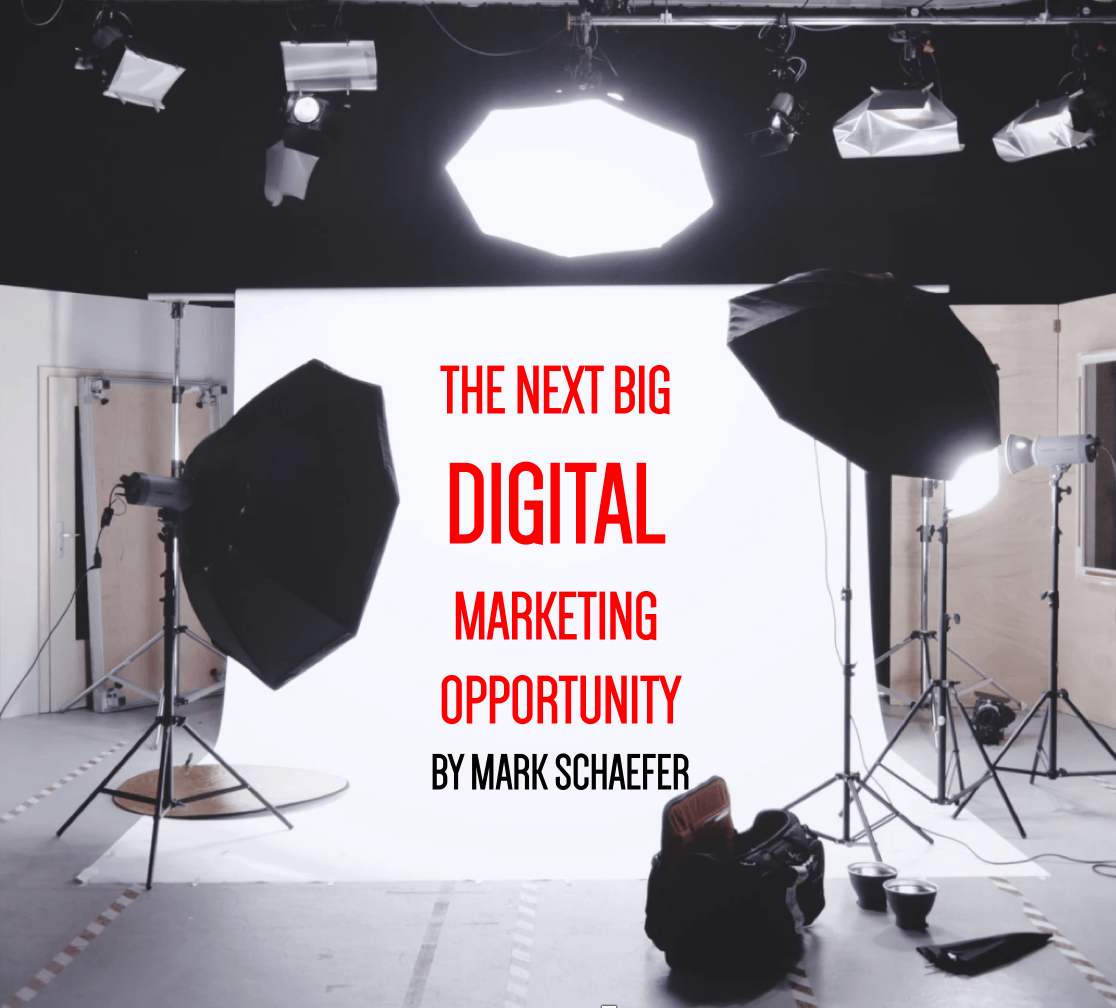By Mark Schaefer
I’m going to propose that we are on the cusp of a great digital advertising shake-out, but to do that, I need to explain how television advertising worked in the 1950s. Are you game for that?
Back in the early days of television, the channel was hungry for content. It was a new medium with slow adoption (by today’s technology standards). So local stations filled the airtime however they could. They had local homemakers doing cooking shows. They had the car repair guy down the street show people how to fix a car. They took anything they could get!
The advertising scene was similarly desperate. Literally anybody could advertise on television. For a few dollars even Pete’s Diner could have somebody from a baking show or car show testify about his delicious burgers and pies.
But then it got crowded.
The squeeze
As television progressed and became insanely popular, the local stations joined syndicates that evolved into the national TV networks. Content became more polished and local programming bit the dust … and so did most local advertisers. As television exploded, only huge brands could afford media buys and Pete’s Restaurant had to find other places to advertise that were more affordable. They still had an ad budget to spend, but TV was simply out of reach.
So those advertising dollars has to squeeze into alternate channels like print and radio.
The same dynamic is happening on the web today and I think we can learn a lesson from the past.
Today, Facebook is the largest media channel in the history of the world. It is bigger than any television network ever was.
In the beginning, Facebook was hungry for content and advertisers. They were eager for anybody that would contribute content or a few ad dollars to the site — even Pete’s Diner. Small businesses loved advertising on Facebook and their customers would probably even see the pictures of Pete’s freshly-baked pies in the News Feed!
Digital on the rise
As everybody knows, we are in an era of Content Shock where there is such an avalanche of content, Facebook has had to continuously ratchet back views of business content to make the News Feed manageable.
So what is the alternative? Advertise.
And in fact, an escalating amount of money is being poured into digital advertising. This is confirmed by a projection from advertising giant Dentsu:
Digital media channels will continue to be the catalyst for the disruption in ad spend … growing globally by 12.6% in 2018, versus 15% in 2017, to reach $220 billion, while mobile will reach $121 billion as desktop will continue to lose global share.
Digital will overtake TV and will account for 38.3% share of total ad spend, as compared to TV’s 35.5%. Paid search will account for the 40% of digital ad spend, with voice-activated devices helping to power its growth.
Crunch time
So in a very simplistic interpretation of this forecast, we would expect that Facebook would sell 12.6 percent more ads this year.
But hold on … didn’t Facebook just tell us they are running out of ad space?
Why yes, they did.
About a year ago, Facebook CFO Dave Wehner said that Facebook’s ad load, or the total number of ads the company can display, is about to max out.
Facebook needs to find a solution to keep the shareholders happy. What are they likely to do? Here are the options:
a) Increase the available ad inventory somehow (Messenger is the likely place for this).
b) Aggressively add more users so they can show more advertisements (but they are approaching a theoretical maximum on this).
c) Create better-performing ads that Facebook can sell for more money.
This last item is the most-likely short-term solution. We saw part of this come true when Facebook announced it would be rewarding both content and ads that are more engaging.
And in this world of exploding demand and limited supply, prices for digital advertising have to go up. Way up.
What happens to small businesses?
This is the television revolution all over again isn’t it?
Good old Pete’s Diner was having a wonderful time on Facebook, but year by year they are witnessing a decline in the organic reach of their content and an increase in the amount they paying for ads.
It might not be this year, or even next year, but at some point those advertising opportunities are going to dry up because it unlikely that Facebook (and Google and Amazon …) will be able to increase ad inventory at a rate that offsets price increases.
And, like the TV days, this will force small advertisers, and even some big ones, to look for new places to advertise their business.
The question is … where?
The great upset
Today, about 77 percent of all online advertising is going to Facebook and Google. But those advertisers — the people who pay the bills — are getting increasing agitated by the non-stop controversies and upsets with those players.
In the past year and a half, those two firms have had one run-in after another with advertisers. Procter & Gamble (the world’s largest advertiser) was among many companies that boycotted Google’s YouTube when they discovered ads were running before extremist and racist videos. Marketers like P&G have also pushed Facebook to provide more credible data about how many people actually view ads on their platforms, after the social giant acknowledged over-stated numbers.
Now there’s the revelation that data on tens of millions of Facebook users were improperly accessed by Cambridge Analytica. That has sparked anxiety among some marketers, including over whether their own data on Facebook are safe.
These companies will have to be looking for alternatives (a situation that could affect the advertising inventory situation!) Many advertisers are actively policing their ad purchases to ensure they avoid objectionable or irrelevant content. Some are cutting budgets. And they are demanding far more transparency from Google and Facebook about the performance of their ad campaigns to make sure they aren’t wasting money.
What is the next business opportunity?
Before I conclude this post, let me emphasize that I am describing a mega trend. For any individual business, there may still be exceptions and plentiful digital advertising options.
But overall, digital ad inventory is projected to go down and prices are going up and some other big companies may be looking for less controversial places to put their ad dollars. So one way or another, advertisers are going to be looking for alternatives.
When TV advertising dried up (like in my example), there were still lots of alternative ad options. But those options aren’t around like they used to be — The reach and effectiveness of advertising on radio and print channels has severely declined, for example.
So this brings up an interesting discussion. If advertisers begin to abandon Facebook and Google, we should begin seeing some of that spend “squeezing out” into alternative options. Some opportunity must emerge beyond the duopoly.
But what?
Is this an opportunity for Twitter? Snapchat? Native advertising? Influence marketing? Virtual reality?
Is this a great time to operate an advertising-funded news site? When was the last time that happened?
Or, will it be something else? Where is the next big advertising business opportunity?
If you know, get there now.

Illustration courtesy Unsplash.com



